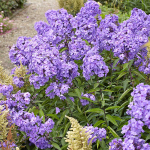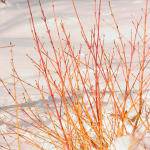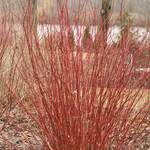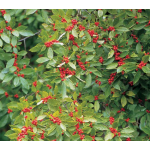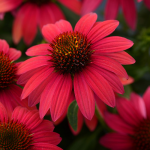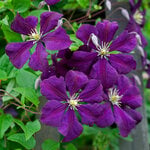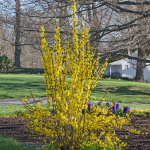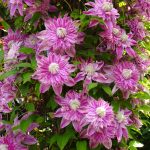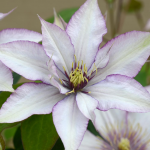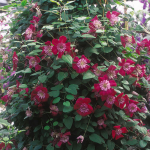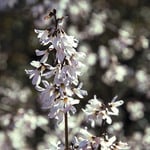Product Details
Although evergreen Hollies are better known, Ilex verticillata (our native deciduous Holly) is a valuable shrub. Both the male and female plants have good, rich green summer foliage. In fall, the leaves yellow, then drop, exposing dense clusters of bright red fruits (on the female plants) that persist well into winter. There is nothing to compare with their look under a fresh snow. Plants prefer moist, acid soil and are bushy enough to provide abundant cuttings without signs of distress. Our Winterberry Pair includes 1 plant each of the female variety 'Winter Red' (PP 4,146) and its male pollinator, 'Southern Gentleman'.
Shipping
HOW PLANTS ARE SHIPPED
The size of the plants we ship has been selected to reduce the shock of transplanting. For some, this means a large, bareroot crown. Others cannot travel bareroot or transplant best if grown in containers. We ship these perennials and annuals in 1 pint pots, except as noted. We must point out that many perennials will not bloom the first year after planting, but will the following year, amply rewarding your patience. We ship bulbs as dormant, bare bulbs, sometimes with some wood shavings or moss. Shrubs, Roses, vines, and other woody plants may be shipped bareroot or in pots. The size of the pot is noted in the quick facts for each item.
WHEN WE SHIP
We ship our bulbs and plants at the right time for planting in your area, except as noted, with orders dispatched on a first-come, first-served basis by climate zone. We also ship a wide range of containers and planters, tools, supplies, fertilizers, garden wear, garden decor items, as well as indoor decorations like wreaths and dried bouquets when available. Estimated dates for shipping are indicated in the green Shipping Details box for each item. Please supply a street address for delivery. Kindly contact us with two weeks notice, if you'll be away at the expected time of delivery.
OUR GUARANTEE
We guarantee to ship plants that are in prime condition for growing. If your order is damaged or fails to meet your expectations, we will cheerfully replace or refund it. Please contact our Customer Service Department at 1-800-503-9624 or email us at [email protected]. Please include your order number or customer number when contacting us.
Reviews
There are no reviews yet. Be first to Write a Review.
Growing guide
Latin Name Pronunciation: eye'-lex
This genus includes some 350 species and is best known for its spiny, evergreen forms with red berries. There are also deciduous selections. All are popular landscape plants whose berries often persist well into winter, and are especially striking against the snow.
Only the female plants produce berries. Give the females a prominent spot and tuck the male plant (which is necessary for pollination) in a less obvious one. A male plant can be up to 40′ from the female without reducing fruit set.
Blue Hollies
The so-called Blue Hollies (Ilex x meserveae) are hybrids between the English Holly, I. aquifolium, and a more cold-tolerant species from northern Japan (I. rugosa). They offer the glossy, spiny leaves of English Holly on plants that are hardier.
Grow Blue Hollies in full sun or light shade in average, well-drained soil. In cold-winter climates, plant in a spot protected from north winds. Prune in late winter or after bloom, but be aware that pruning reduces fruit production.
Winterberry Hollies
Winterberry Hollies (Ilex verticillata) are deciduous plants. Leaves are mid-green and quite unlike the prickly, shiny leaves of evergreen Hollies. In the fall, the leaves turn yellow, then drop to reveal dense clusters of bright red, berry-like fruits on the female plants.
Winterberry Holly grows in full sun, partial shade, and even quite dense shade (at some cost to flower and berry production). In the wild, it is found in wet soil, but it also grows well in average soil and tolerates a fair measure of drought once established. It does insist on acid soil. Prune in late winter or after bloom, but be aware that pruning reduces fruit production. Not a good choice in the desert Southwest.

